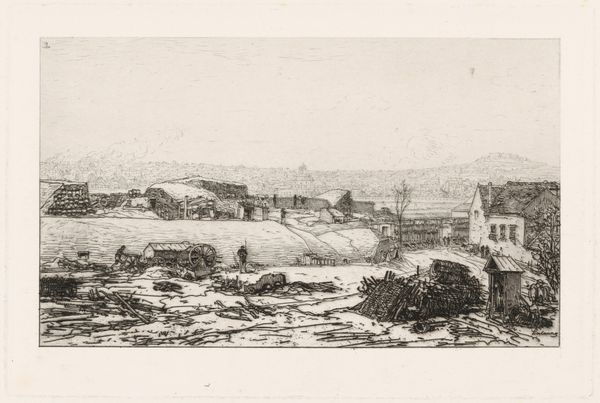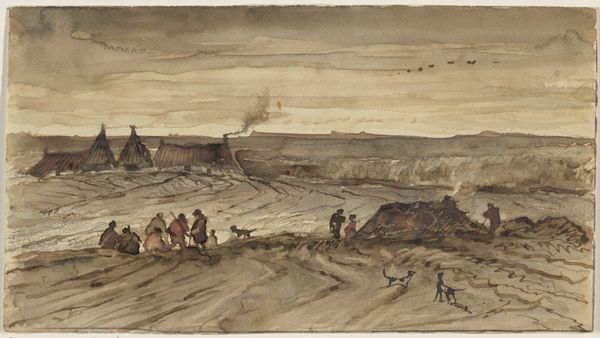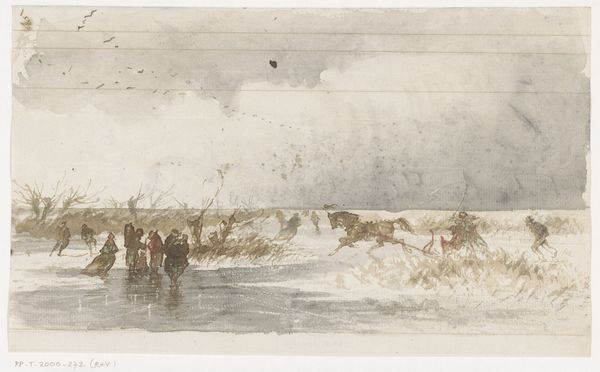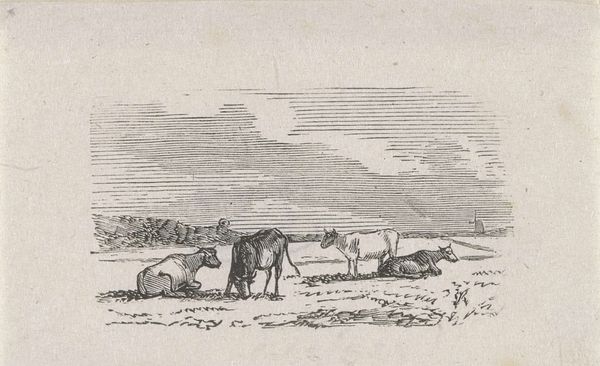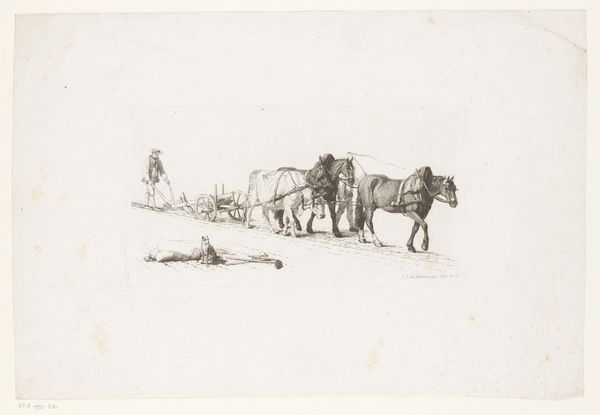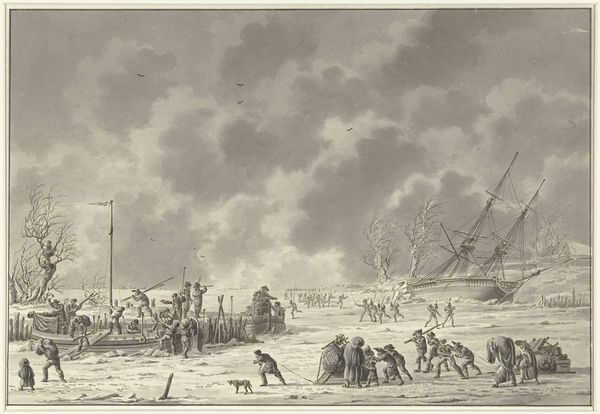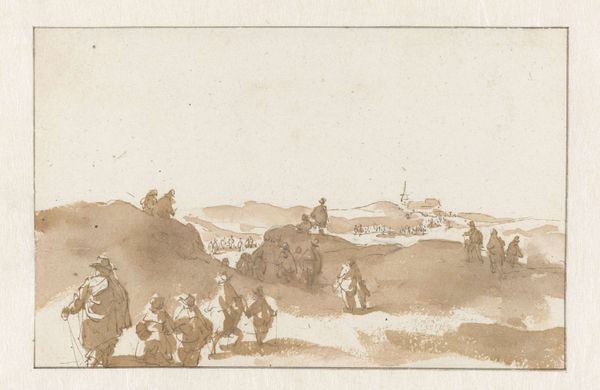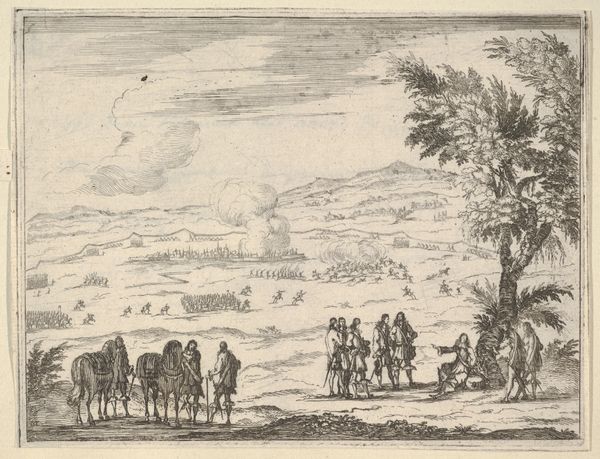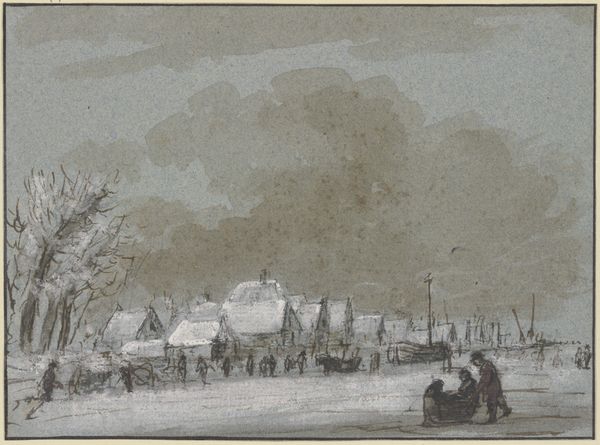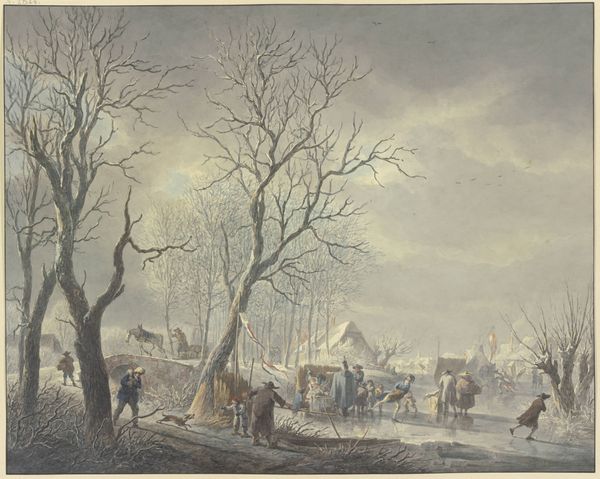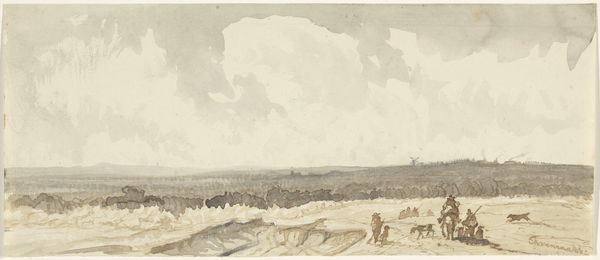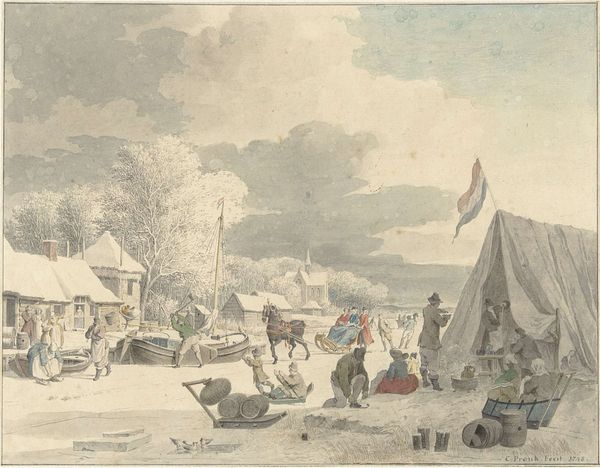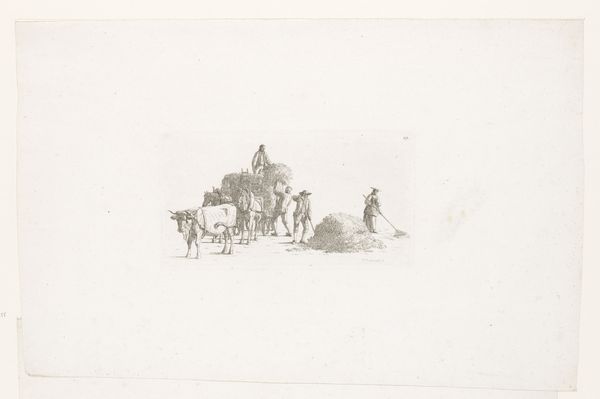
Gezicht op de kleine haven van Luogo Vivo op de vaarroute San Vito 1778
0:00
0:00
louisducros
Rijksmuseum
Dimensions: height 180 mm, width 529 mm
Copyright: Rijks Museum: Open Domain
Editor: So, this watercolor and etching is titled "View of the small harbor of Luogo Vivo on the waterway of San Vito," created in 1778 by Louis Ducros. It's housed in the Rijksmuseum. There's something very subdued about the color palette; almost like a faded memory. What stands out to you? Curator: Well, the 'faded memory' feeling is very perceptive. Considering Ducros's travels were funded by wealthy patrons eager for depictions of the Italian countryside, how might this image reinforce or subtly subvert the expectations of those patrons? Consider the lack of idealization, for instance. Editor: I see what you mean. It's not a grand, heroic landscape, is it? It’s more… ordinary. So, you're saying it might be making a subtle comment on what art was expected to portray back then? Curator: Exactly! Think about the social context of landscape art in the late 18th century. These weren’t just pretty pictures; they were tied to ideas of ownership, travel, and even colonialism. By presenting this somewhat unromanticized view, what might Ducros be suggesting about these power dynamics? Who are the people occupying the landscape? How are they presented? Editor: Hmm… They are clearly workers. They almost seem dwarfed by the landscape; it doesn't feel celebratory but instead kind of matter-of-fact and grounded in reality. I hadn't thought about it that way, but I can definitely see the commentary now. It's not just a pretty picture; it's saying something about class and labor. Curator: Precisely. And that invites us to question whose perspective usually dominates artistic representations of landscape and consider whose stories are often left out. Editor: This has really changed how I see this artwork. I initially responded to the aesthetic but now recognize its subtle complexities. Curator: And that's the beauty of art history—peeling back the layers to reveal deeper meanings and connections to the world around us and the systems within it.
Comments
No comments
Be the first to comment and join the conversation on the ultimate creative platform.

